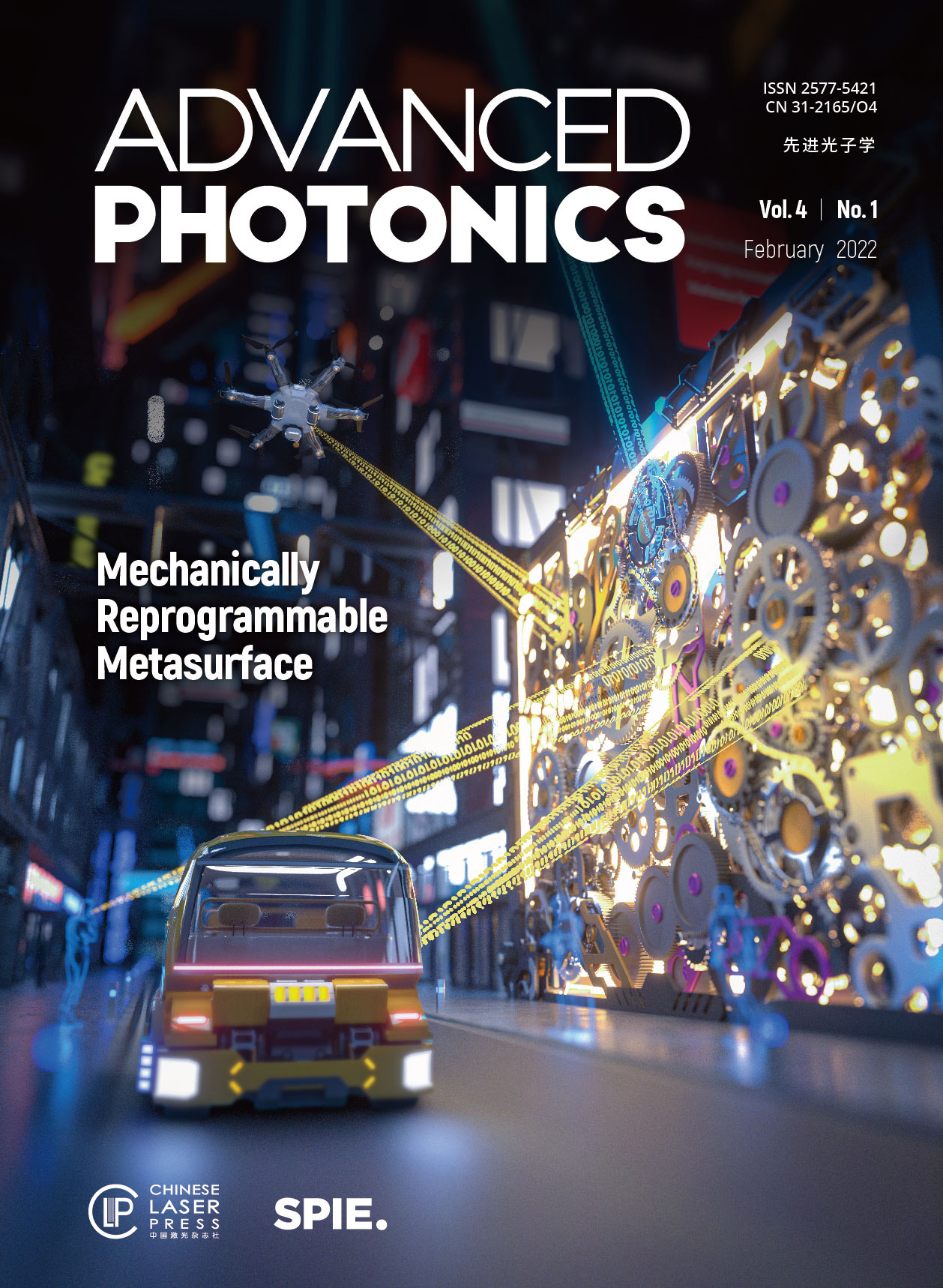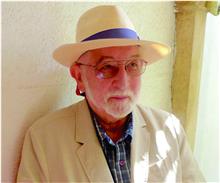 View fulltext
View fulltext
The image illustrates a reconfigurable intelligent surface that operates at microwave frequencies and uses a robust mechanical control method to flexibly determine the rotation angle of each meta-atom.
Advanced Photonics Co-Editors-in-Chief Anatoly Zayats and Xiao-Cong (Larry) Yuan provide a retrospective glance at the journal and share exciting news for the coming year.
Photonics will have a major impact in delivering net zero.
Ultrafast-laser direct lithography strategy engineers local chemistry at the nanoscale in glass, to achieve 3D direct writing of nanocrystals with a widely tunable bandgap. Feng Chen provides a commentary on the reported technique and its potential for nanocrystal-based device fabrication.
Sir Michael Berry was interviewed by Dr. Wei Liu of National University of Defense Technology, China, for Advanced Photonics.
White light, which contains polychromic visible components, affects the rhythm of organisms and has the potential for advanced applications of lighting, display, and communication. Compared with traditional incandescent bulbs and inorganic diodes, pure organic materials are superior in terms of better compatibility, flexibility, structural diversity, and environmental friendliness. In the past few years, polychromic emission has been obtained based on organic aggregates, which provides a platform to achieve white-light emission. Several white-light emitters are sporadically reported, but the underlying mechanistic picture is still not fully established. Based on these considerations, we will focus on the single-component and multicomponent strategies to achieve efficient white-light emission from pure organic aggregates. Thereinto, single-component strategy is introduced from four parts: dual fluorescence, fluorescence and phosphorescence, dual phosphorescence with anti-Kasha’s behavior, and clusteroluminescence. Meanwhile, doping, supramolecular assembly, and cocrystallization are summarized as strategies for multicomponent systems. Beyond the construction strategies of white-light emitters, their advanced representative applications, such as organic light-emitting diodes, white luminescent dyes, circularly polarized luminescence, and encryption, are also prospected. It is expected that this review will draw a comprehensive picture of white-light emission from organic aggregates as well as their emerging applications.
Time-varying media have recently emerged as a new paradigm for wave manipulation, due to the synergy between the discovery of highly nonlinear materials, such as epsilon-near-zero materials, and the quest for wave applications, such as magnet-free nonreciprocity, multimode light shaping, and ultrafast switching. In this review, we provide a comprehensive discussion of the recent progress achieved with photonic metamaterials whose properties stem from their modulation in time. We review the basic concepts underpinning temporal switching and its relation with spatial scattering and deploy the resulting insight to review photonic time-crystals and their emergent research avenues, such as topological and non-Hermitian physics. We then extend our discussion to account for spatiotemporal modulation and its applications to nonreciprocity, synthetic motion, giant anisotropy, amplification, and many other effects. Finally, we conclude with a review of the most attractive experimental avenues recently demonstrated and provide a few perspectives on emerging trends for future implementations of time-modulation in photonics.
The achievement of functional nanomodules for subcellular label-free measurement has long been pursued in order to fully understand cellular functions. Here, a compact label-free nanosensor based on a fiber taper and zinc oxide nanogratings is designed and applied for the early monitoring of apoptosis in individual living cells. Because of its nanoscale dimensions, mechanical flexibility, and minimal cytotoxicity to cells, the sensing module can be loaded in cells for long term in situ tracking with high sensitivity. A gradual increase in the nuclear refractive index during the apoptosis process is observed, revealing the increase in molecular density and the decrease in cell volume. The strategy used in our study not only contributes to the understanding of internal environmental variations during cellular apoptosis but also provides a new platform for nonfluorescent fiber devices for investigation of cellular events and understanding fundamental cell biochemical engineering.
Metasurfaces have enabled the realization of several optical functionalities over an ultrathin platform, fostering the exciting field of flat optics. Traditional metasurfaces are achieved by arranging a layout of static meta-atoms to imprint a desired operation on the impinging wavefront, but their functionality cannot be altered. Reconfigurability and programmability of metasurfaces are the next important step to broaden their impact, adding customized on-demand functionality in which each meta-atom can be individually reprogrammed. We demonstrate a mechanical metasurface platform with controllable rotation at the meta-atom level, which can implement continuous Pancharatnam–Berry phase control of circularly polarized microwaves. As the proof-of-concept experiments, we demonstrate metalensing, focused vortex beam generation, and holographic imaging in the same metasurface template, exhibiting versatility and superior performance. Such dynamic control of electromagnetic waves using a single, low-cost metasurface paves an avenue towards practical applications, driving the field of reprogrammable intelligent metasurfaces for a variety of applications.
Broadband Raman spectroscopy (detection bandwidth >1000 cm - 1) is a valuable and widely used tool for understanding samples via label-free measurements of their molecular vibrations. Two important Raman spectral regions are the chemically specific “fingerprint” (200 to 1800 cm - 1) and “low-frequency” or “terahertz” (THz) (<200 cm - 1; <6 THz) regions, which mostly contain intramolecular and intermolecular vibrations, respectively. These two regions are highly complementary; broadband simultaneous measurement of both regions can provide a big picture comprising information about molecular structures and interactions. Although techniques for acquiring broadband Raman spectra covering both regions have been demonstrated, these methods tend to have spectral acquisition rates <10 spectra / s, prohibiting high-speed applications, such as Raman imaging or vibrational detection of transient phenomena. Here, we demonstrate a single-laser method for ultrafast (24,000 spectra / s) broadband Raman spectroscopy covering both THz and fingerprint regions. This is achieved by simultaneous detection of Sagnac-enhanced impulsive stimulated Raman scattering (SE-ISRS; THz-sensitive) and Fourier-transform coherent anti-Stokes Raman scattering (FT-CARS; fingerprint-sensitive). With dual-detection impulsive vibrational spectroscopy, the SE-ISRS signal shows a >500 × enhancement of <6.5 THz sensitivity compared with that of FT-CARS, and the FT-CARS signal shows a >10 × enhancement of fingerprint sensitivity above 1000 cm - 1 compared with that of SE-ISRS.














